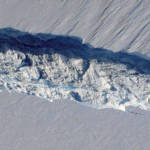Image courtesy of Barron Bixler
Excerpt
California novelist T. C. Boyle has a reputation for environmental comedy, and specifically for satires of characters who advocate, often in absurdly extreme ways, for native species and wilderness conservation while turning a blind eye to the border-crossing migrations of people and other species that have shaped the US. . . . In his 2016 novel The Terranauts, Boyle directs this wry view of one sort of American environmentalism at another—what we could call technosurvivalism. The novel retells the checkered history of Biosphere 2: the "scaled-down replica of Earth . . . replete with a desert, a savanna, a rain forest and a wave-machine-rippled ocean, as well as its own sealed and calibrated atmosphere" that two separate crews inhabited from 1991 to 1993 (Miles). The novel explores the contradictory narratives that inform such a venture, which channels not only a dystopian belief in the planet's eventual demise but also a utopian fantasy that at least a few Homo sapiens might replicate themselves and Earth's biomes elsewhere. If the project's name signals that Biosphere 2 (renamed E2 in the novel) is a miniature Earth, its geographical setting in the Arizona desert and financial backing by a zealous billionaire (whom Boyle calls G. C., for "God the Creator") draws on colonial ideas of America as a new world, a terra rasa to be terraformed by Europeans. The Terranauts ridicules the bad-faith environmentalism of the biosphere by juxtaposing these colonial undercurrents with the costly technologies required to build and operate a geodesic dome and with the fatalistic premise that Earth is a lost cause. Put differently, the novel parodies Biosphere 2 to show it up as solipsistic rather than self-sustaining—a tiny "Spaceship Earth," to invoke Buckminster Fuller, that does not foster healthy ecologies, nourishing food, or a sense of place but instead fuels hunger pangs and backbiting among its eight human colonists.


